A lot of you have been asking lately about the ability to grow hydroponic potatoes. Root crops have been always controversial when trying to grow them in hydroponics. However, people did seem to have fun growing them. This made me ponder a question, can we grow potatoes hydroponically?
So, can we grow potatoes hydroponically? The answer is yes, potatoes can be grown hydroponically. In fact, most of the root crops can be grown using hydroponics. However, they are not as easy as they seem to be.
I have to admit, root plants are one of the most fun crops to grow. Especially potatoes, it will provide a whole new experience that you have never passed through before.
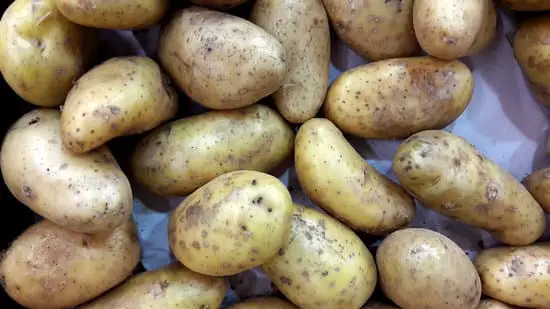
With new experiences comes several mistakes, and to be honest, I found out that most of the hydroponic newbies are making fatal mistakes that could literally destroy their whole plant.
In this article, you will learn the exact process of growing hydroponic potatoes. Moreover, I have gathered all of the fatal mistakes that newbies tend to do when they are first starting growing their potatoes hydroponically so that you can avoid repeating them in your hydroponic journey.
The Hydroponic Potatoes Growing Conditions
Maintaining the optimum growing conditions for hydroponic potatoes is vital for reaching the harvest stage that you have always dreamt of. If any of these conditions got messed up, the consequences vary widely. It can result in stunting the plant’s growth and can even reach the death stage.
The Best Temperature For Hydroponic Potatoes
Hydroponic potatoes perform their optimum growth at temperatures that range from 65°F to 75°F.
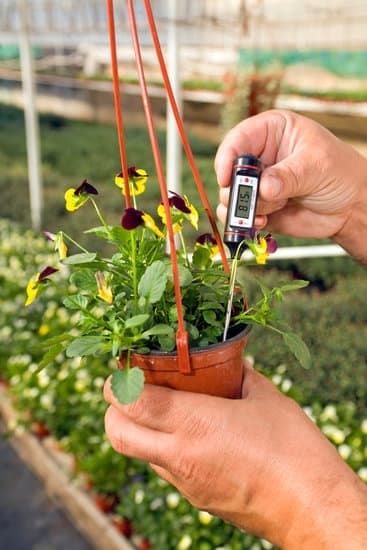
Sometimes, temperatures tend to rise above 65°F or fall below 75°F during different seasons. For example, temperatures in the state of Florida can sometimes reach as high as 90°F which is 15°F higher than the optimum temperature of potatoes.
Another example is the state of North Dakota. Temperature felled to reach 27.7°F in 2019. This temperature could result in a complete freeze and a near-death for your hydroponic potatoes.
So, unless your state tends to have steady temperatures year-round, you have to invest in either a heater or a chiller. Heaters can literally save you on cold seasons and allow you to continue growing throughout the year. On the other hand, chillers can save your plants on an extremely hot day.
The Nutrient Solution For Hydroponic Potatoes
The nutrient solution’s pH should be kept around 6. A range that starts from 5.8 to 6.2 pH can be sufficient to keep your hydroponic potato growing efficiently. The ppm must be maintained in a range of around 1400 to 1700.
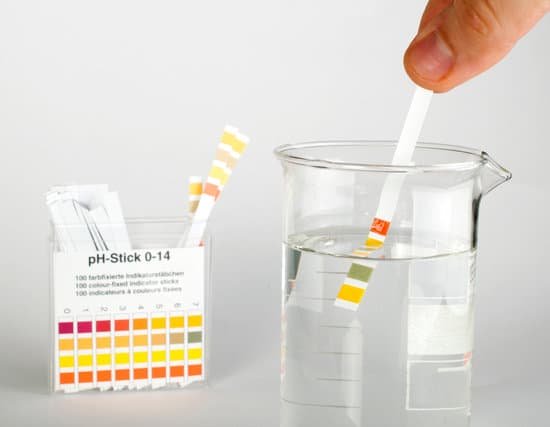
There are two other crucial factors that must be maintained in your nutrient solution and those are temperature and water level.
The temperature of your nutrient solution must be around 70°F. Any fluctuations must be dealt with either by using a water chiller or a heater.
The nutrient solution level is a crucial aspect, especially when growing a water and humidity-sensitive crop like potatoes. I have explained in detail how to set the water level of your deep water culture system in this article before.
I would suggest lowering the nutrient solution height below the described level in the previous article to avoid rupturing the potatoes as they are extremely water sensitive.
The Watering Schedule Of Hydroponic Potatoes
If you are using an ebb and flow system, you must follow a watering schedule. I recommend your watering schedule should be around 6 times a day for an average of 10 minutes each time. You can experiment with watering more frequently up to 8 times on hot days and see the results yourself.
Light Requirements For Hydroponic Potatoes
Your hydroponic potatoes should get at least 6 hours of light per day. They will perform the best when exposed to 10 to 12 hours of light every day.
You can choose whether to grow these hydroponic potatoes using sunlight or artificial growing lights. Of course, using growing lights can add an extra cost to your electricity bills, but you will be growing them indoors which will eliminate the risk of getting infected by many pests.
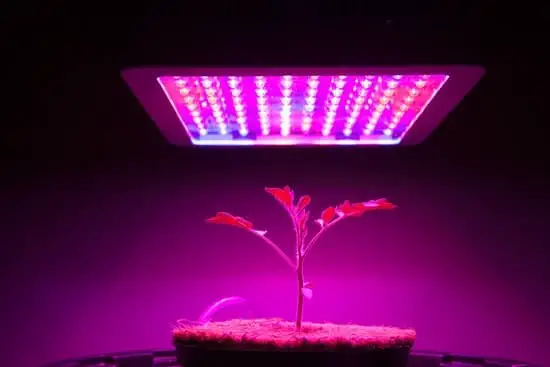
If you have finally decided to take the step and use grow light instead of sunlight, I recommend buying LED growing lights because of their efficient power consumption.
You can also check this article that I have written before to get an idea about how much your hydroponic potatoes will cost monthly in terms of electricity.
The Growing Medium Of Hydroponic Potatoes
Having a growing medium for your hydroponic potatoes is critical to producing potatoes as large in size as possible. The growing medium is essential for potatoes as it provides sufficient pressure just as soil to aid in the proper formation process.
But there is a huge difference between the pressure made by soil and growing mediums. Soil provides a slightly lower pressure which helps in the proper formation of potatoes, and at the same time, is not high enough to limit the size growth.
On the other hand, growing mediums like perlite produce higher pressure that results in many smaller-sized tubers.
So, does this mean that tubers cant grow in size just like they used to be in soil? No, their size can still grow large by doing a few modifications. It has been proven that a combination of different growing mediums can be the answer to all of this.
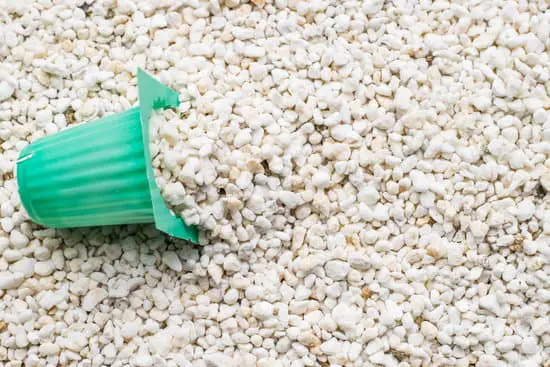
A blend of vermiculite, perlite, and peat has been shown to produce very high yields that were almost the same size as soil-grown potatoes.
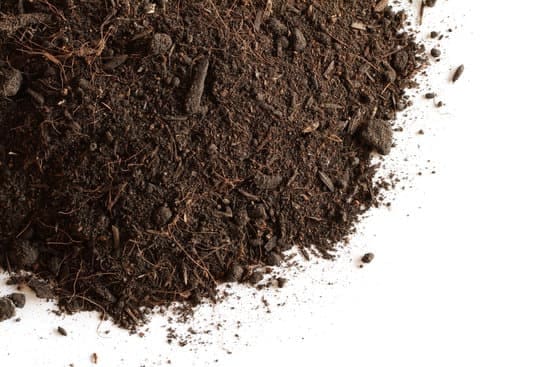
Having vermiculite and perlite tend to absorb and hold moisture from the nutrient solution upwards to spread across all of the growing mediums. Moreover, perlite helps keep the oxygen levels sufficient enough for the roots to survive.
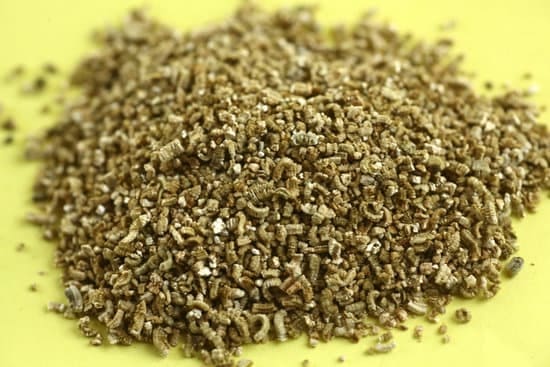
How To Grow Hydroponic Potatoes (A Step By Step Guide)
So, now we are going to describe the exact steps taken to grow hydroponic potatoes. In this guide, we will be using an ebb and flow system.
Step 1
Buy the previously mentioned certified disease-free seeds. Place these seeds in Rockwool cubes and keep these cubes moist every day.
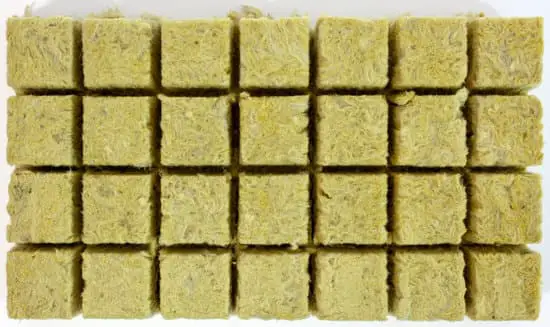
The temperature should be maintained at 70°F for 14 days till all of the seeds germinate.
Step 2
Transplant the seedlings into the ebb and flow system. The bucket should be filled with perlite, vermiculite, and peat as a growing medium.
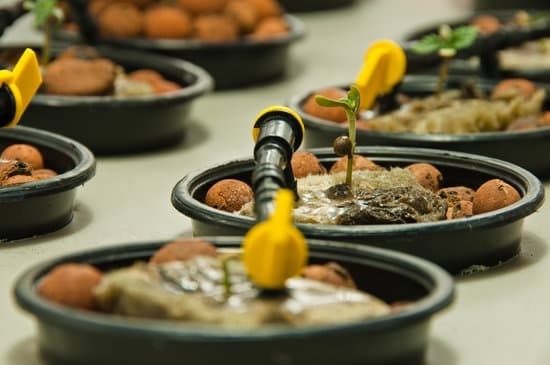
Place the seedling in a relatively small ebb and flow system, and then transplant the plant into a larger one when the tubers start to form.
Maintain a minimum of 6-8 hours of light per day, and the temperature should be kept between 65°F to 75°F.
Step 3
As the tubers start to form, the consumption of the nutrient solution will increase, so make sure to increase the watering schedule times so that your potatoes can grow well without any nutrient or water deficiency.
Watering times should be around 6 times a day with an average of around 10 minutes each. You can increase it to 8 times if you feel that the tubers have grown more to reach the harvest stage.
Step 4
The journey from seed to harvest usually takes up to 120 days. Hydroponics can speed up this process, but still, you have got to wait and have some patience.
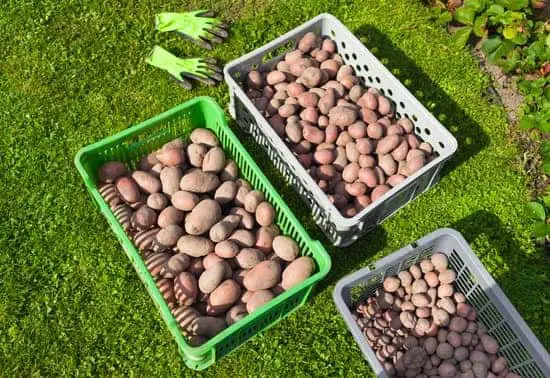
After your tubers have grown enough and are ready for harvest, gently remove the plant from the growing medium. Make sure that you haven’t left any potatoes behind in the perlite and vermiculite blend.
The Top 5 Mistakes To Avoid While Growing Potatoes Hydroponically
1-Choosing The Wrong System For Hydroponic Potatoes
I have seen this problem a lot with many newbie growers. Choosing a hydroponic system that is inappropriate for your potatoes might go unnoticed until you realize that you had done a huge mistake.
Usually, the nutrient film technique, or as they call it “the raft system” will be the first choice among most beginners due to its huge popularity.
At first, everything will seem fine and the planted seedling will continue growing normally. But after a couple of months when the plant reaches a certain growth stage, things will be different. The roots will be clogged in the narrow pipes and potatoes will get stuck inside the system as they will become larger than the pot’s opening.
Choosing the right hydroponic system is crucial if you want your hydroponic potatoes to survive long enough to reach the harvest stage.
The Most Appropriate Hydroponic System For Potatoes
Hydroponic potatoes tend to grow well in an ebb and flow system with a medium of clay pebbles or perlite. When potatoes were grown underground, there was pressure created by the soil. This pressure was required in order for the potatoes to grow into the right form and shape.
If the pressure disappears, the potatoes will grow in a malformed shape. As a result, a medium such as clay pebbles or perlites is hugely required in order to balance the pressure.
2-Planting Hydroponic Potatoes Beside The Wrong Plants
If you want to grow hydroponic potatoes successfully to reach the harvest stage, you have to avoid growing your potatoes beside certain crops. As you know, plants do compete on key growth factors like water, light, and nutrients.
When potatoes were grown in soil, they used to compete on these key growth factors heavily, especially, when grown beside certain plants.
These plants are:
- Cucumber
- Tomatoes
- Pumpkin
- Squash
- Melons
- Sunflowers
You might think that you did a getaway by using hydroponics instead of soil. Well, I hate to break it to you, but growing one of the above crops beside your potatoes can destroy them just as if they were grown in soil.
All of the previously mentioned crops, especially tomatoes, tend to consume tremendous amounts of water and nutrients. You might get away by topping off your nutrient solution constantly, but if you missed one day, I am not sure of the consequences
3-Over Watering Hydroponic Potatoes
Back then when we used to grow potatoes in soil, water was considered a huge problem. Regular water schedules should be followed. If there was a shortage of water, the plant’s growth will be stunted. On the other hand, an increase in water can lead to the production of malformed potatoes.
Potatoes normally don’t favor high humidity, so, well soil drainage must be ensured to prevent potato rot.
Right now, you must be thinking that hydroponics can be a huge nightmare considering that we use only water to grow any crop, and to some extent, this might turn out to be true. The maintenance of the nutrient solution level must be maintained to avoid killing your potatoes early on.
Whether you are using a deep water culture system, or an ebb and flow system, proper water levels must be maintained.
If you are going to use a deep water culture system, you will find out the exact water level required here in this article. Using another system like ebb and flow will need a very strict watering schedule that you will learn about later in this article.
4-Using Store Bought Potatoes
Many newbie growers will try to grow sprout potatoes as their first trial. I can’t blame them, sprout potatoes are easy to be found in every kitchen, and it can save time rather than starting the growing process from the seed stage.
Unfortunately, store-bought potatoes can be a huge downside in your journey of growing hydroponic potatoes. Most store-bought potatoes are treated with sprout inhibitors to prevent them from sprouting early on.
So, you will find a better time growing potatoes from their seed stage rather than trying to regrow the sprout inhibited potatoes that were purchased from the grocery store.
Another important factor to consider is purchasing certified disease-free seeds. This can save you a lot of time and money in the future. The disease-free seeds will ensure that the grown crops will be free from any popular disease that will otherwise spoil your harvest.
5- Exposing Tubers To Light
You have to differentiate between the whole potato plant and the tubers that are forming underground. Of course, every plant needs light to grow and reach the harvest stage. But here, we are talking about the tubers.
Tubers must not be exposed to light under any circumstances. When light reaches the tubers, they turn green. The green areas contain a toxic substance called solanine.
Oftentimes, I see people get excited when they first see the tubers developing in their system. If they are using a DWC system, they open up and close the lid several times a day.
On the other hand, other growers using an ebb and flow system with pebbles will try and pull the tubers several times out of their medium to see how far their tubers have developed.
Sources
- https://www.ag.ndsu.edu/publications/lawns-gardens-trees/from-garden-to-table-my-potatoes-turned-green-now-what#:~:text=potatoes%20turn%20green%3F-,Potato%20tubers%20turn%20green%20when%20they%20are%20exposed%20to%20sunlight,in%20their%20sensitivity%20to%20light.
- https://www.ncbi.nlm.nih.gov/pmc/articles/PMC5091364/
- https://pubmed.ncbi.nlm.nih.gov/11537254/



what nutrient solution to use?
you mentioned pH and ppm, but what nutrients at what ratio (NPK)?
thanks for the article.